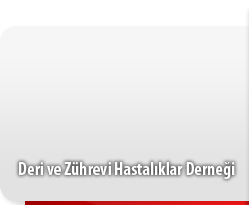The Efficiency of 1064 nm Nd: YAG Laser in the Treatment of Different Types of VerrucaTuncer Saçar1, Handan Saçar21Ödemiş Devlet Hastanesi 2. Dermatoloji Kliniği, İzmir, Türkiye
2Bornova Şifa Hastanesi Dermatoloji Kliniği, İzmir, Türkiye
Background and Design: The aim of this study was to determine the efficiency of 1064 nm Nd: YAG laser in different types of verruca.
Material and Method: A prospective descriptive study was planned. The study group constituted of 198 patients who had referred to the dermatology outpatient clinic between September 2007 and September 2008 with warts located at different sites and not previously treated.
Results: Of the 198 patients aged 7-65 years who applied to our outpatient clinic during the study, 83 (41.9%) were female, 115 (58.1%) were male and the female/male ratio was 0.72; the total wart number, the mean wart number, and standard deviation were found to be 1127, 6.59, and 14.28, respectively. The location of warts was as follows: periungual (n=25; 12.6%), facial - plana (n=16; 8.1%), palmar (n=45; 22.7%), plantar (n=70; 35.4%), and genital (n=42; 21.2%). At clinical recovery evaluation, the recovery rate was 97% (range: 75-100%), and the patient satisfaction was found to be 98.5% in recovery rate over 50%. Our results and the rate of side effects overlap with those in the literature.
Conclusion: The treatment success ratio with 1064 nm Nd: YAG laser is quite high in comparison with the other treatment methods and its side effects are not too much, except for pain. Being expensive is the disadvantage of the system. We suggest that Nd: YAG laser is the most efficient and time-saving method in patients with needle fear, unwilling to receive longstanding local treatment, and in children. Keywords: Nd YAG 1064 nm laser, treatment, verruca, viral wart.
1064 nm Nd YAG Lazerin Farklı Verruka Tiplerinin Tedavisinde EtkinliğiTuncer Saçar1, Handan Saçar21Ödemiş Devlet Hastanesi 2. Deri ve Zührevi Hastalıklar Kliniği, İzmir, Türkiye
2Bornova Şifa Hastanesi Deri ve Zührevi Hastalıklar Kliniği, İzmir, Türkiye
Amaç: 1064 nm Nd YAG lazerin farklı siğil tiplerinde etkinliğinin belirlenmesi amaçlanmıştır.
Gereç ve Yöntem: Prospektif tanımlayıcı bir çalışma planlandı. Çalışma grubumuzu Eylül 2007 ile Eylül 2008 tarihleri arasında dermatoloji polikliniğimize başvuran daha önce tedavi almamış, farklı bölge yerleşimli siğilleri olan 198 hastadan oluşturduk.
Bulgular: Çalışma süresince başvuran 7 ile 65 yaş arasındaki 198 hastanın 83ü bayan (%41,9), 115i erkek (%58,1), kadın/erkek oranı 0,72, toplam siğil sayısı 1127, ortalama siğil sayısı 6.59, standart sapma 14.28 olarak tespit edildi. Hastaların 25i (%12,6) periungual, 16sı (%8,1) fasiyal, 45i (%22,7) palmar, 70i (%35,4) plantar, 42si (%21,2) genital bölge yerleşimli idi. Klinik iyileşme değerlendirilmesinde % 75-100 arası iyileşme oranı %97, hasta memnuniyeti açısından %50nin üzerinde iyileşme oranı % 98,5 olarak tespit edildi. Bulgularımız ve yan etki oranlarımız literatür bulguları ile örtüşmektedir.
Sonuç: Diğer tedavi yöntemleri ile karşılaştırdığımızda 1064 nm Nd YAG lazer ile tedavi başarı oranı oldukça yüksek olup ağrı dışında yan etki potansiyeli de fazla değildir. Sistemin dezavantajı pahalı olmasıdır. İğne korkusu olanlarda, çocuklarda, uzun süren lokal tedavi istemeyenlerde en etkili, en az zaman kaybına yol açan yöntem olduğu düşüncesindeyiz. Anahtar Kelimeler: Nd YAG 1064 nm lazer, tedavi, siğil, viral siğiller.
Tuncer Saçar, Handan Saçar. The Efficiency of 1064 nm Nd: YAG Laser in the Treatment of Different Types of Verruca. Turkderm-Turk Arch Dermatol Venereol. 2010; 44(3): 156-159
Corresponding Author: Tuncer Saçar, Türkiye |
|



